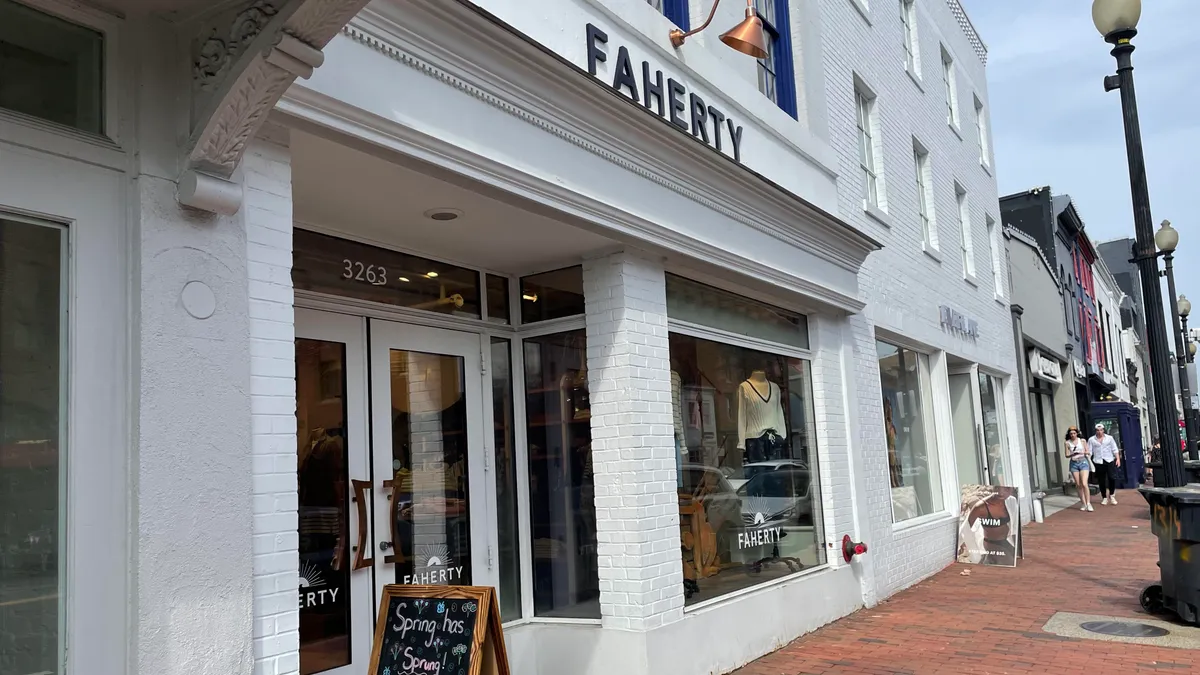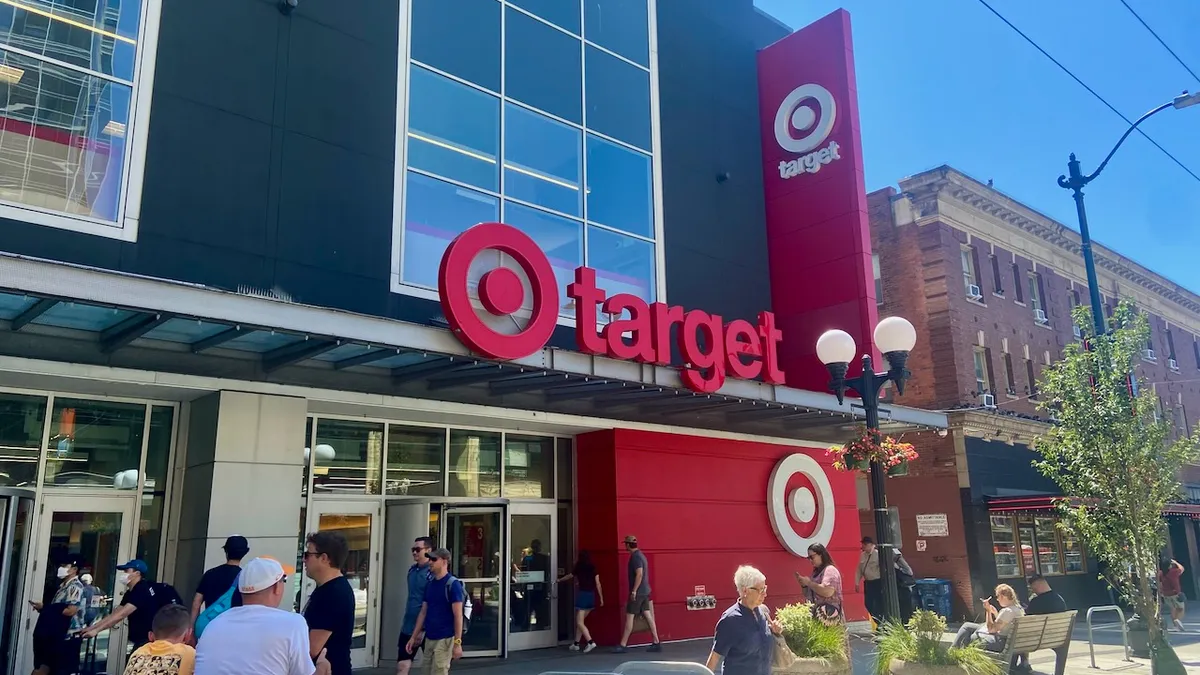After putting brick-and-mortar plans on ice at the onset of the pandemic, DTC brands are back in expansion mode.
Companies like Brooklinen, Savage X Fenty, Burrow and ThirdLove have announced plans to open more stores as the limitations of selling almost entirely online become increasingly apparent. As many DTC brands grapple with the high cost of customer acquisition — which sometimes can come at the expense of profitability — stores have become an additional marketing vehicle.
DTC brands are strategically mapping out physical locations of their stores, and are starting to look beyond New York City for viable options.
“If you look at the old retail playbook, it was kind of: Put down stores until the profit per square foot doesn't make so much sense,” Katherine Black, a partner in the consumer practice of Kearney, said. “What we see really with DTC brands is their stores, their location strategy is really used to lower their cost of customer acquisition to their online store. So they're really looking for locations that have very high traffic.”
Among the regions gaining popularity with DTC brands is Washington, D.C.’s Georgetown neighborhood.
Warby Parker, Everlane, Faherty, Allbirds, Brilliant Earth, Bonobos and Outdoor Voices are just a handful of brands that have opened in the area in recent years.
But the neighborhood hasn’t always been a hotbed for online brands.
The last decade of retail in Georgetown
When a shopper walked down Georgetown’s popular M Street 10 years ago, the retail scene looked different.
“The most noticeable, notable change — retail space wise — over the last 10 years has been the fact that restaurants have basically abandoned M Street. Not entirely, but almost entirely. And what seems to replace them almost every time is some sort of, generally women's clothing store,” said Topher Matthews, writer of the Georgetown Metropolitan blog and resident of the neighborhood since 2003. “Out of every five new stores, four of them are some sort of clothing store.”
In addition to restaurants exiting M Street, Matthews said a lot of college bars that had once been mainstays in the neighborhood, like Rhino Bar, have since disappeared as well, replaced by national apparel retailers.
“It probably was about 10 years ago, I had some tourists walk up to me on M Street, and they basically were like, ‘So where are the shops?’ And I was like, ‘Well, you're here,’” Matthews said. “They were like ‘These are just what you'd see in a mall.’ I sort of shrugged my shoulders. Like yeah, that's what we got. Ten years ago, it was probably even more of a mall than it is now.”
But some of those traditional retailers, like Brooks Brothers and Loft, that operated stores on popular streets in the neighborhood have filed for bankruptcy and closed many stores as a result, including their Georgetown locations. This, Matthews said, has added to the number of vacancies or perceived vacancies in the area.
“Generally, vacancies are always, always a story with Georgetown where it seems to be high,” he said, adding “that's one thing that locals complain about all the time. It doesn't matter how far back they've been complaining about vacancies, particularly on Wisconsin Avenue. … There's just increasing numbers of vacant spaces down there, which in the past, it had these very stable national brands.”
"Ten years ago, it was probably even more of a mall than it is now."

Topher Matthews
Georgetown Metropolitan writer
More recently, the vacancy rates in the neighborhood spiked in 2020 following the murder of George Floyd and subsequent protests, according to Joe Sternlieb, CEO of Georgetown’s Business Improvement District. “I think we had vandalism in 57 businesses when they came through, and a bunch of places didn't reopen, and some places reopened and closed,” Sternlieb said. “We had a net loss over the pandemic of about 60 brick-and-mortar retail and restaurant businesses. Last year, we had a net increase of 27 between openings and closings, and I think we'll do something similar this year.”
Vacancy rates have started to come down in recent months
The increased vacancies coupled with the fact that rents became more negotiable opened up an opportunity for DTC brands to move in, Kearney’s Black said.
“A lot of brands who were in high growth mode really took advantage of that trend as much as possible during the pandemic because I think most folks saw that as a real opportunity to continue their expansion strategy,” Black said. “Those with capital who had a strong business model, who were in growth mode, I think absolutely took advantage of some of the other stores going out of business or closing.”
What makes Georgetown so attractive for DTC brands?
Several brands that launched online realize the importance of having a physical presence to help acquire customers and scale their businesses.
“Direct-to-consumer brands that do not have a brick-and-mortar strategy, need to have one,” said Philippe Lanier, a principal at EastBanc, the landlord who owns the Georgetown stores of Outdoor Voices, The Reformation, Gorjana, Everlane, Faherty and Glossier. “A comprehensive retail brand needs to have both and needs to be able to string a story between how they sell online … versus the experience that [consumers] have in the store.”
While New York City, Los Angeles and San Francisco were among the top cities where DTCs opened their first few stores, Georgetown is quickly becoming a destination for digitally native brands.
Georgetown's M Street is increasingly becoming saturated with DTC brands
Over 15 direct-to-consumer companies have opened up stores in the neighborhood with more on the way, including Glossier, which plans to open a store this summer.
So what makes this quaint D.C. neighborhood attractive to DTC companies?
For one, it’s situated near a university, which generates significant traffic to businesses. But the neighborhood has also become a destination for residents from the surrounding suburbs, which Black attributes to how easily accessible it is for those residents compared to other neighborhoods, like SoHo, which is more isolated.
“We have 2.8 million square feet of retail and 4,000 housing units, maybe 1,000 residents at best,” Sternlieb said. “Ten percent of our retail sales are to residents … 90% of the customers were imported from probably a two- or three-mile radius of Georgetown.”
It’s also become a stop on the map for out-of-town tourists visiting Washington, D.C., who “want to check out Georgetown. They've heard of it before, get a cupcake, whatever,” Matthews said.
And unlike some other areas, like downtown where many of the businesses close after workers leave the offices, Georgetown continues to draw traffic well after those stores close for the night.
“The interesting thing about Georgetown is, it has a long day to it. It's not just a shopping center that closes at 6 p.m. or 8 p.m. There are a number of bars and restaurants — it's known to have a very vibrant nightlife scene,” Black said. “If part of your strategy is almost to use the store as a billboard, that counts. So that store, that billboard is getting really active traffic long after the store is closed at night with a key target demographic. Because you’re getting people cycling through as tourists or for business purposes or as part of the university, you're getting a wide range of eyeballs on that store, which is exactly the strategy to make the brand known to then acquire those customers to the website.”
Downtown areas, which were heavily saturated with offices and commuters, suffered particularly hard when businesses shifted to remote working. Georgetown, being somewhat more residential, was better able to weather the challenges.
“The residents never left. I say we lost 60 businesses but we didn't lose 390,” Sternlieb said. “It's just a beautiful environment that people want to be in. So on a nice day — even at the height of the pandemic — there were still people sort of walking around. In downtown it was sort of an office park and when the office workers stopped coming, everything imploded. Whereas in Georgetown, when the office workers stopped coming, the residents were still here, the visitors were still here, the tourists — to the extent that there were tourists — were still here.”
Foot traffic has been on the rise in 2022
To help cater to the conditions brought on by the pandemic, the neighborhood introduced 35 outdoor areas for restaurants to expand to during the pandemic, Sternlieb said, adding that it has “created a sense of life” on the streets further enticing other businesses to open up.
"That store, that billboard is getting really active traffic long after the store is closed at night with a key target demographic."

Katherine Black
Partner at Kearney
The ability to work from home and have more flexibility has also helped weekday traffic in the neighborhood to increase because consumers have more time to shop and dine during the week as opposed to saving it for the weekend, according to Lanier.
The area, being a true neighborhood, fits into the authenticity these brands try to possess and feels a bit more "genuine," Black said. And the fact that many of the buildings are older with smaller square footage appeals to the needs DTC brands have when it comes to opening stores.
“Everybody's figured out that Georgetown is the amenity rich neighborhood, that it’s well maintained,” Sternlieb said. “The people are back and so if they're going to move back into the market, this is the place they want to come first.”























